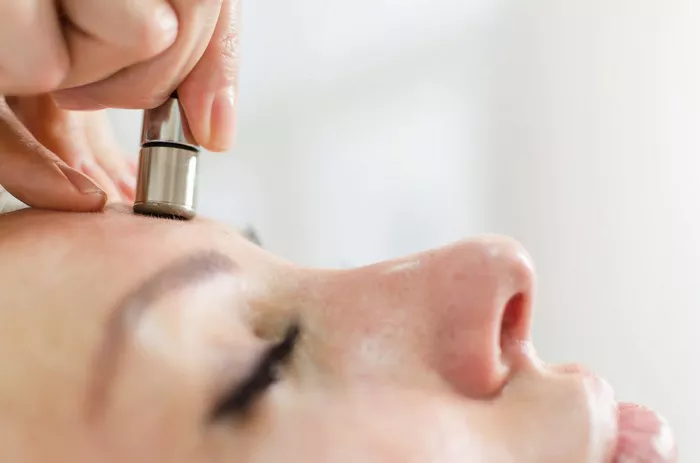Dermabrasion is a cosmetic procedure designed to improve the appearance and texture of the skin by removing its outermost layer. This popular skin rejuvenation technique can effectively address various concerns, including fine lines, wrinkles, acne scars, and sun damage. However, to achieve the best results while ensuring safety and minimal risk, it’s essential to understand how often dermabrasion should be done. In this article, we will explore the factors that influence the frequency of dermabrasion treatments and provide guidelines to help you make informed decisions about your skincare regimen.
Understanding Dermabrasion
Dermabrasion is a controlled exfoliation technique that uses a specialized device to remove the top layer of skin. The procedure is typically performed in a clinical setting by a trained healthcare professional, such as a dermatologist or a plastic surgeon. Here’s a brief overview of the dermabrasion process:
Preparation: Before the procedure, the patient’s skin is thoroughly cleansed and numbed with a local anesthetic.
Treatment: During the treatment, a handheld device with an abrasive tip is used to gently abrade the skin’s surface. The depth of abrasion is determined by the specific skin concern being addressed.
Healing: After dermabrasion, the skin undergoes a healing process during which the outer layer peels off, revealing smoother, fresher skin underneath.
Recovery: Patients may experience redness, swelling, and some discomfort during the initial recovery period. It’s essential to follow post-treatment care instructions to promote proper healing.
Factors Influencing the Frequency of Dermabrasion Treatments
The ideal frequency of dermabrasion treatments can vary from person to person, depending on several factors:
Skin Concerns: The type and severity of the skin concern being addressed play a significant role in determining how often dermabrasion should be done. Some concerns, like mild acne scarring or fine lines, may require multiple sessions spaced several weeks apart, while others, such as maintenance treatments for skin texture improvement, may be less frequent.
Skin Type: Different skin types react differently to dermabrasion. Fair or sensitive skin may require more extended intervals between treatments to allow for proper healing and to avoid potential complications like post-inflammatory hyperpigmentation.
Treatment Depth: The depth of dermabrasion also affects the recommended frequency. Superficial treatments may be performed more often, while deeper treatments necessitate longer intervals between sessions to ensure safe and effective healing.
Health and Age: An individual’s overall health and age can influence the frequency of dermabrasion. Younger, healthier patients often have faster healing times, allowing for more frequent treatments if needed.
Lifestyle and Sun Exposure: Lifestyle factors, such as sun exposure and smoking, can impact the healing process. Patients who protect their skin from excessive sun exposure and avoid smoking tend to heal more efficiently, potentially allowing for more frequent treatments.
Guidelines for the Frequency of Dermabrasion Treatments
While there is no one-size-fits-all answer to how often dermabrasion should be done, some general guidelines can help determine the appropriate treatment schedule:
Mild Skin Concerns: For mild skin concerns like superficial acne scarring or minor sun damage, dermabrasion sessions can typically be spaced 2 to 4 weeks apart. Multiple sessions may be required for optimal results.
Moderate to Severe Skin Concerns: Deeper skin concerns, such as deep wrinkles or extensive acne scarring, may necessitate longer intervals between treatments, ranging from 6 to 12 weeks or more. These treatments are typically performed less frequently.
Maintenance and Skin Texture Improvement: For general skin texture improvement and maintenance, patients may opt for dermabrasion treatments every 2 to 3 months. These sessions help maintain skin health and radiance.
Consultation with a Professional: It is crucial to consult with a board-certified dermatologist or plastic surgeon for a personalized treatment plan. They will assess your skin type, specific concerns, and medical history to determine the optimal frequency of dermabrasion treatments for your unique needs.
Post-Treatment Care: Following post-treatment care instructions diligently is essential to ensure proper healing and reduce the risk of complications. This includes protecting your skin from sun exposure, avoiding harsh skincare products, and staying hydrated.
Conclusion
Dermabrasion is a versatile cosmetic procedure that can effectively address a wide range of skin concerns. The frequency of dermabrasion treatments varies depending on factors such as skin concerns, skin type, treatment depth, and overall health. To determine the ideal treatment schedule, it is crucial to consult with aqualified healthcare professional who can assess your individual needs and develop a personalized treatment plan. With proper care and guidance, dermabrasion can help you achieve smoother, more youthful-looking skin while ensuring your safety and well-being.


